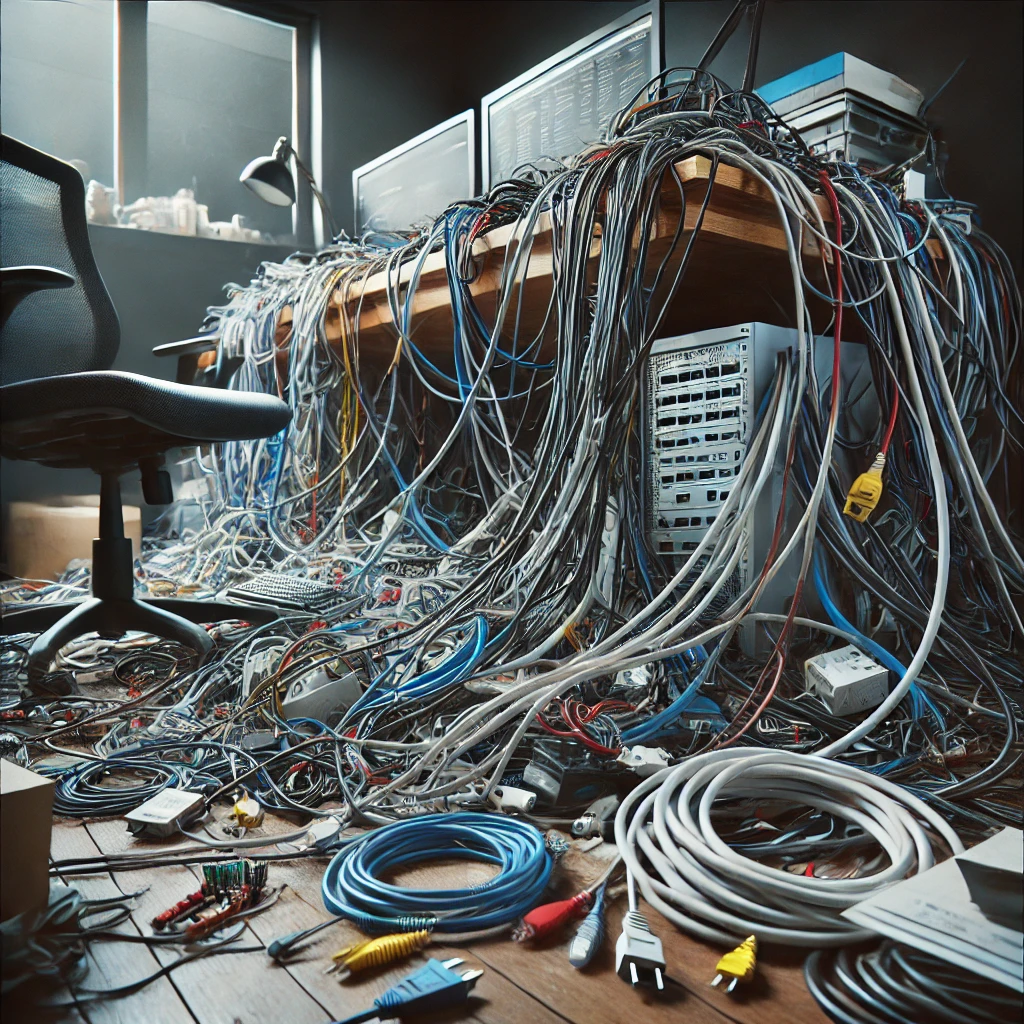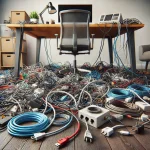In today's digital age, most workspaces are filled with various electronic devices, each with its own set of cables and wires. Without proper management, these cables can quickly become a tangled mess, leading to a cluttered and inefficient workspace. This article will provide you with practical tips and strategies for effective under-desk cable management.
Why Cable Management Matters
Before diving into the tips, it's essential to understand why cable management is crucial:
- Safety: Loose cables can be a tripping hazard.
- Aesthetics: A tidy workspace looks more professional and inviting.
- Efficiency: Organized cables make it easier to identify and access specific connections.
- Equipment Protection: Proper management reduces wear and tear on cables and ports.
Essential Tools for Cable Management
To effectively manage your under-desk cables, you'll need some basic tools:
- Cable ties or velcro straps
- Adhesive cable clips
- Cable sleeves or wraps
- Under-desk cable trays or baskets
- Label maker or cable identification tags
Tips for Effective Under-Desk Cable Management
1. Start with a Clean Slate
Begin by unplugging all devices and removing all cables from your workspace. This allows you to assess your needs and start fresh.
2. Plan Your Layout
Before reattaching cables, plan where each device will be placed and how the cables will be routed. This foresight can save you time and frustration later.
3. Use a Power Strip Mount
Mount a power strip under your desk using a bracket or strong adhesive strips. This centralizes your power source and reduces cable clutter.
4. Implement Cable Trays

Install cable trays under your desk to contain and route cables. These keep cables off the floor and make them easily accessible for changes or additions.
5. Bundle Similar Cables
Group cables by type or destination using velcro ties or cable sleeves. This prevents tangling and makes individual cables easier to trace.
6. Utilize Adhesive Cable Clips
Attach adhesive cable clips to the underside of your desk to guide individual cables. This keeps cables in place and prevents them from hanging loosely.
7. Label Your Cables
Use a label maker or colored cable ties to identify different cables. This saves time when you need to unplug or replace something.
8. Create a Cable Spine
For standing desks or cables that need to reach the floor, use a flexible cable spine. This keeps cables together and looks neat at any desk height.
9. Leave Some Slack
Don't pull cables too tight when organizing. Leave some slack to allow for movement and prevent strain on connections.
10. Regular Maintenance
Periodically check and reorganize your cable management setup. Replace any worn components and adjust for new equipment as needed.
Conclusion
Effective under-desk cable management is an ongoing process that requires initial planning and regular maintenance. By implementing these tips, you can create a cleaner, safer, and more efficient workspace. Remember, the goal is not perfection but improvement – even small steps toward better cable management can make a significant difference in your work environment.
For more insights and tips on cable ties and other related products, explore cabletiesunlimited.com and follow us on our social media communities on Facebook and Instagram!

